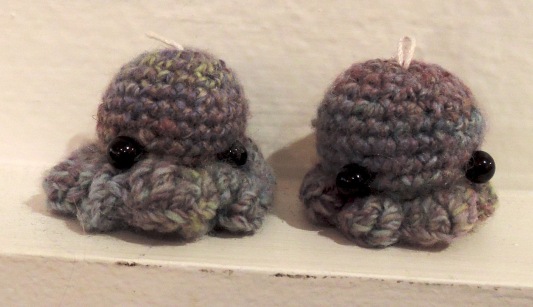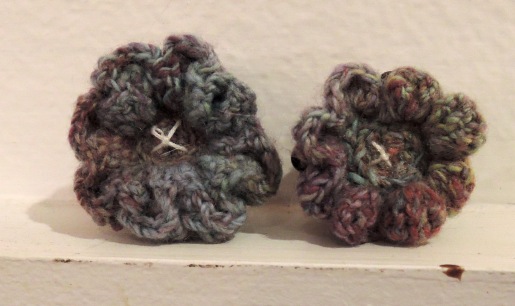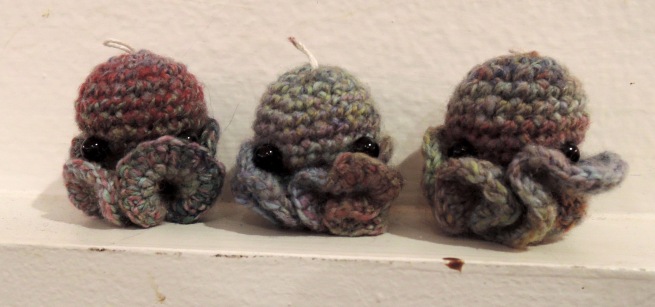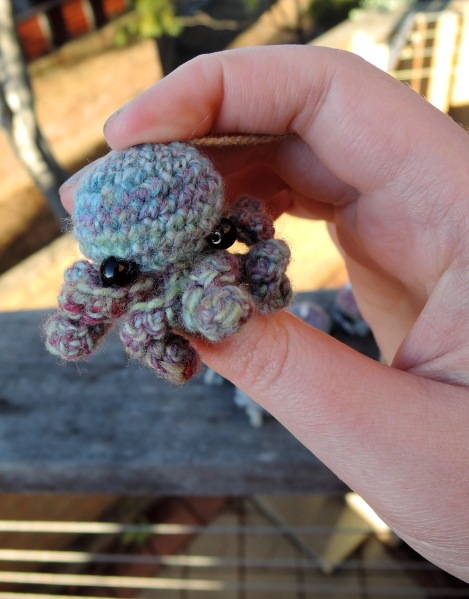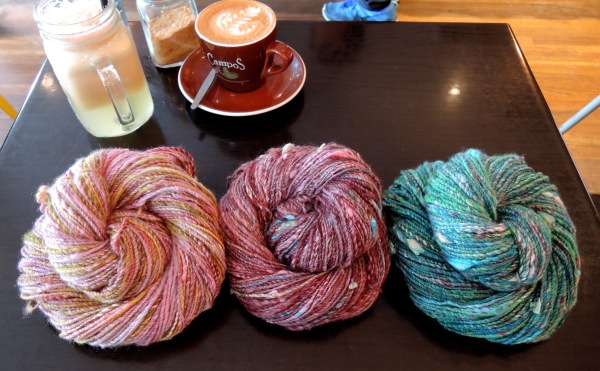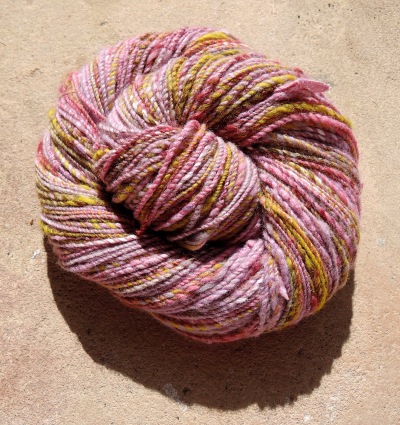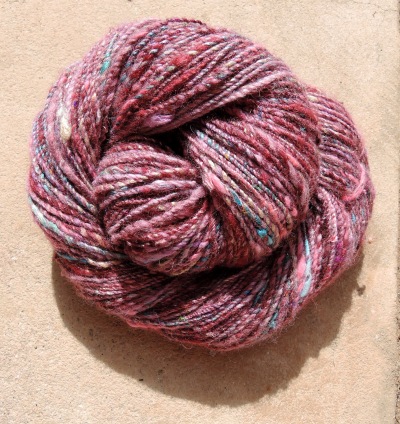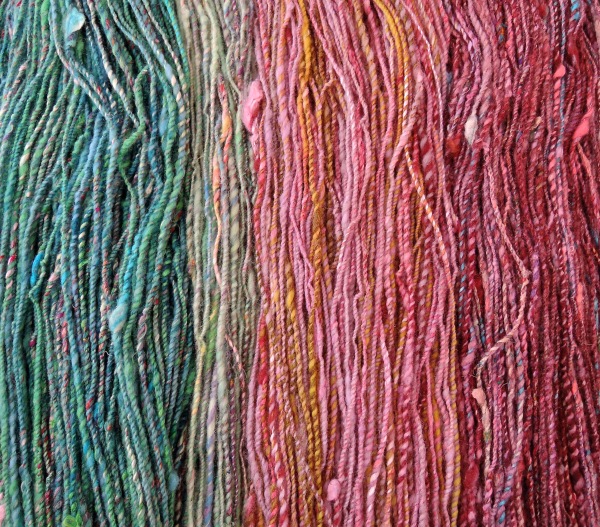A few years ago I happened to go through a phase of picking up a decent amount of white yarn on sale. I didn’t have any plans for it at the time, but it seemed like a good idea, and as it turn out, it was.
Because now I have dyes. So when I want a specifically coloured yarn, all I need is my dyes and white yarn (coloured yarn works too, but overdyeing is more limiting).
Recently I decided that I must make a hat for my friend Cassie. She loves black, and I wanted to throw another colour in there as well, so it had to be pink.
I started with the presoaked yarn draped between two pots, one with black dyes and one with pink. I wanted until the black had wicked a little up the yarn, and then quickly applied a ‘resist’ to stop the dye moving too far, since the concentration of black is much much higher than pink. I made my resist out of two chopsticks and two hair ties, very make-do.
I waited until the dye had started to absorb into the yarn, then added citric acid, so that the dye started to bind to the fibre.
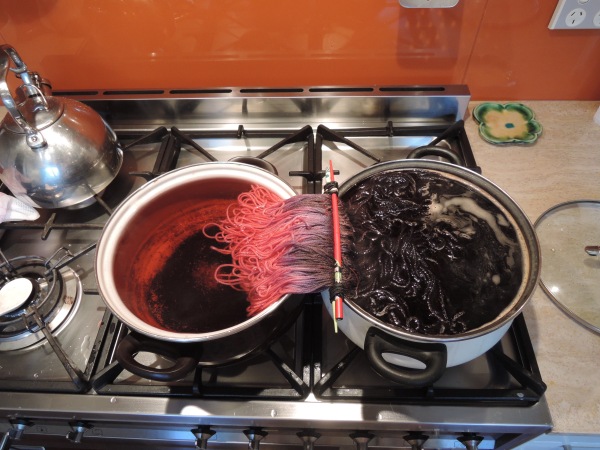 I alternated between sliding the yarn in one direction and than the other, to get a nice coverage of dye, sometimes sliding the chopsticks back if I felt like there wasn’t enough dye underneath them.
I alternated between sliding the yarn in one direction and than the other, to get a nice coverage of dye, sometimes sliding the chopsticks back if I felt like there wasn’t enough dye underneath them.
When the water bath started to exhaust (go clear as all the dye was bound to the yarn), I removed the chopstick-resist. I eventually tipped all the yarn into the pink pot, and let it cool there.
And here it is, two of my skeins, I dyed three over all…
But one of them is already in use, I really like how this is working up, particularly how the colour repeats are forming a cool chevron pattern.
Close up you can see how lovely and shiny the pink and black are on the yarn. And the gradual fade of one to another. I chose to embrace the fading black, which in this case has a purplish base, so combined with the black gives a kind of lavender fade. Very pretty.
Tim made a dog friend. Delle was very very happy.









